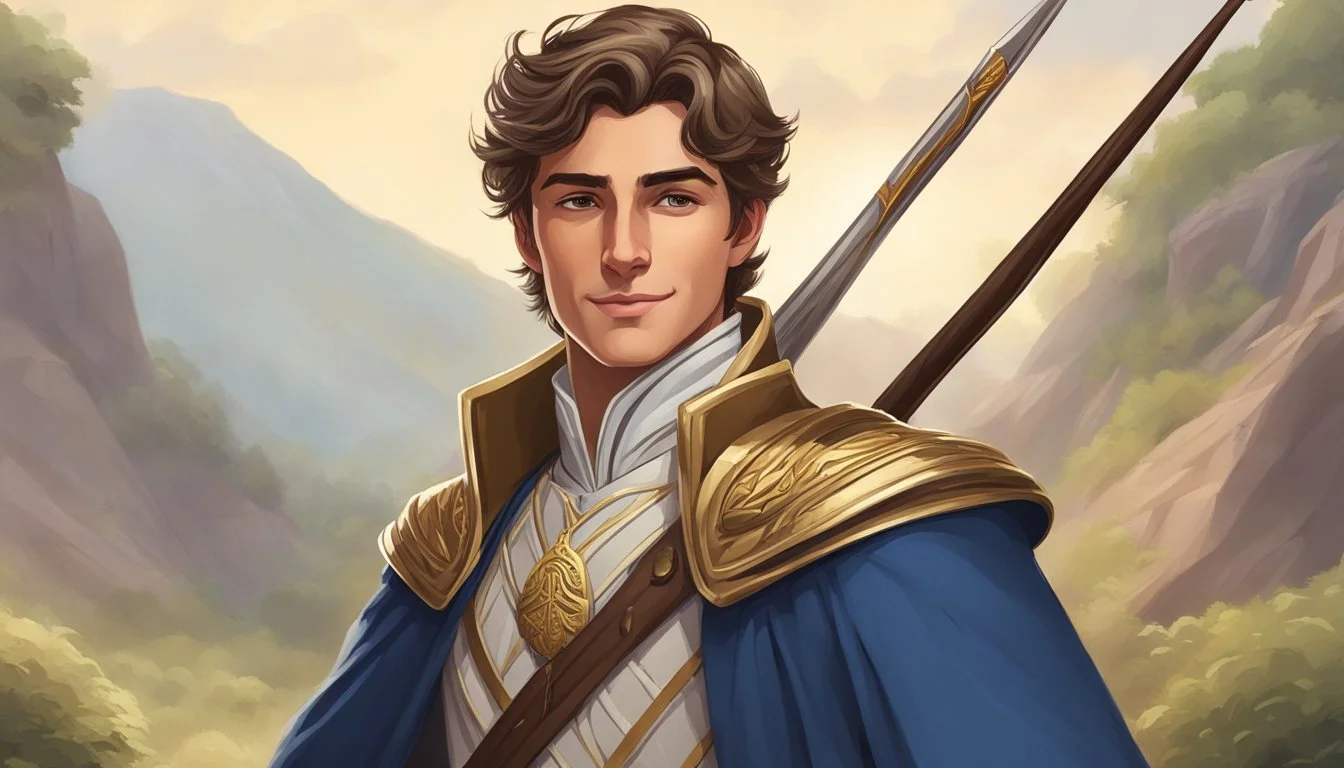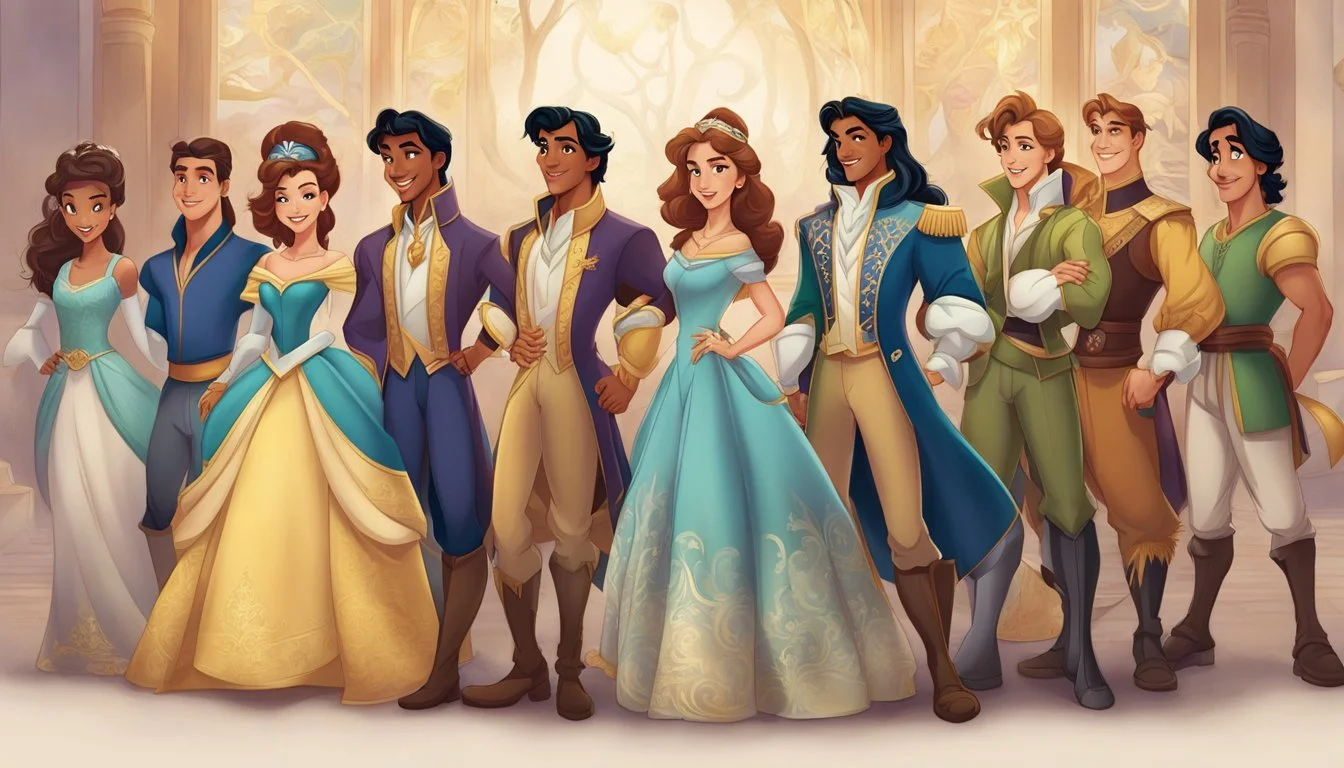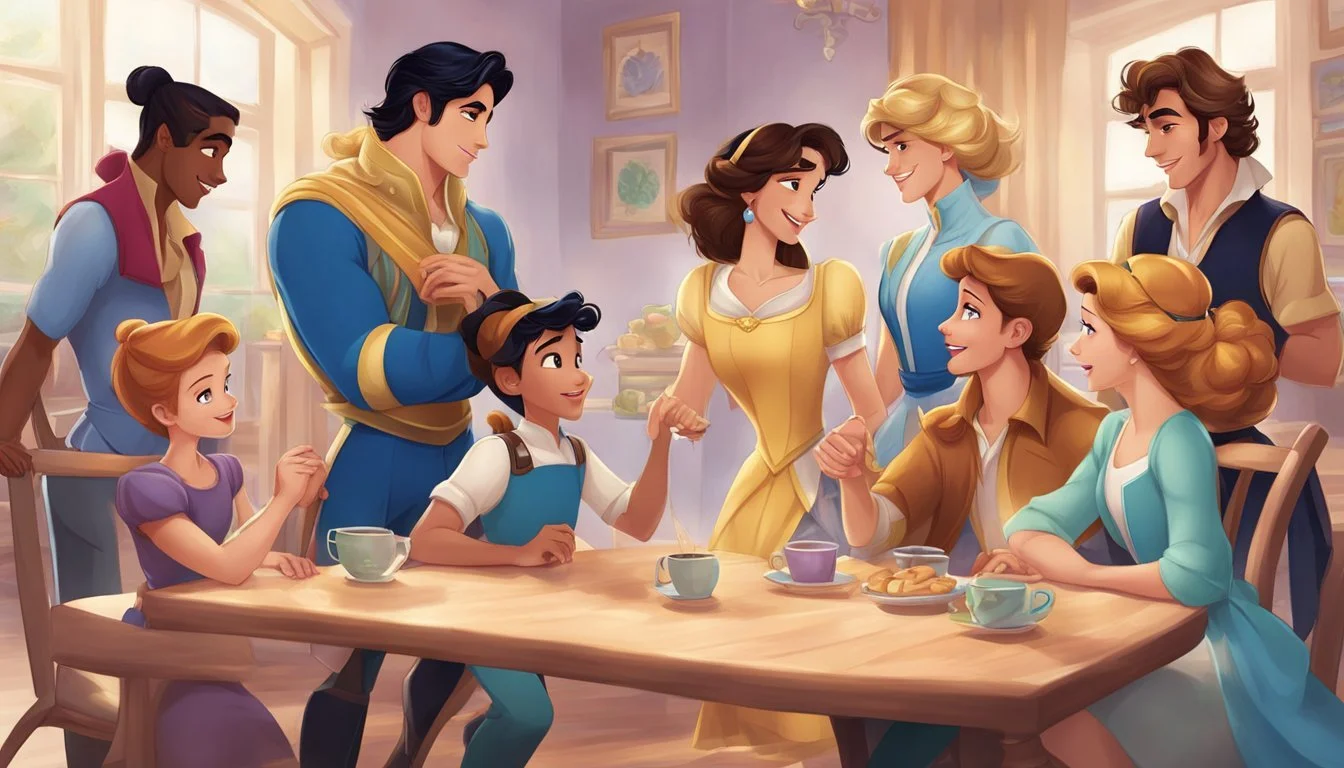Disney Prince MBTI: Analyzing Personality Types Through the Framework
Disney princes have captivated audiences for generations with their charming personalities and heroic deeds. These beloved characters exhibit a wide range of traits that can be analyzed through the lens of personality types, such as the Myers-Briggs Type Indicator (MBTI).
Understanding the personality types of Disney princes can provide insights into their motivations, strengths, and potential areas for growth. From the dreamy and idealistic Prince Eric of The Little Mermaid to the adventurous and confident Flynn Rider from Tangled, each prince brings a unique set of characteristics to their stories.
Exploring the MBTI types of Disney princes offers fans a deeper appreciation for these characters and their roles in their respective films. It also allows viewers to identify which princes they might relate to most based on shared personality traits.
Overview of Disney Princes
Disney princes have evolved significantly since their introduction, playing crucial roles in animated classics. Their personalities and character arcs contribute greatly to the storytelling and themes of Disney films.
Historical Evolution
The first Disney prince appeared in 1937's Snow White and the Seven Dwarfs. Early princes were often one-dimensional characters with limited screen time. They served primarily as romantic interests for the princesses.
As Disney films progressed, princes gained more depth and backstory. Aladdin (1992) marked a shift, featuring a male protagonist as the titular character. This trend continued with films like The Lion King and Tangled.
Modern Disney princes exhibit a wider range of personalities and backgrounds. They now include non-royal characters like Flynn Rider and more diverse cultural representations such as Li Shang from Mulan.
Role in Storytelling and Character Development
Disney princes have become integral to plot development and thematic exploration. They often undergo significant character growth alongside the princesses.
In Beauty and the Beast, the Beast's transformation is central to the story. His journey from selfish prince to compassionate partner drives the narrative.
Princes now frequently challenge traditional gender roles. Kristoff from Frozen supports Anna's quest rather than leading it himself. This shift reflects changing societal values and expectations.
Many recent princes, like Naveen from The Princess and the Frog, start as flawed individuals. Their character arcs involve learning important life lessons, adding depth to the overall story.
The Intersection of Personality and Royalty
Disney princes exhibit diverse personality traits that shape their roles and relationships within their royal contexts. These characteristics influence how they navigate challenges and interact with other characters.
Defining Personality in the Context of Disney
Disney princes display a range of personality types, from introverted to extroverted, and from thinking to feeling orientations. Some princes, like Beast from "Beauty and the Beast," show introverted tendencies, preferring solitude and introspection. Others, such as Aladdin, embody extroverted traits with their outgoing nature and social ease.
Thinking types like Li Shang from "Mulan" prioritize logic and strategy. In contrast, feeling types like Prince Naveen from "The Princess and the Frog" rely more on emotions and personal values in decision-making.
Intuitive princes like Prince Phillip from "Sleeping Beauty" tend to focus on possibilities and future outcomes. Sensing types such as Flynn Rider from "Tangled" are more attuned to present realities and practical concerns.
Personality Traits of Notable Disney Princes
Prince Eric from "The Little Mermaid" exhibits INFP traits with his idealistic and dreamy nature. His curiosity and openness to new experiences align with this personality type's characteristics.
ESTJ traits are evident in Prince Charming from "Cinderella," who displays decisiveness and a strong sense of duty. His adherence to tradition and societal expectations reflects the structured mindset typical of this personality type.
Prince Adam (Beast) from "Beauty and the Beast" shows INTJ tendencies. His initial aloofness, strategic thinking, and eventual personal growth are consistent with this personality type's attributes.
Aladdin embodies ENTP characteristics with his quick wit, adaptability, and creative problem-solving skills. His charm and ability to think on his feet are hallmarks of this personality type.
Myers-Briggs Type Indicator (MBTI) and Disney Princes
The Myers-Briggs Type Indicator offers insight into the personalities of beloved Disney princes. This framework provides a lens to analyze their traits, motivations, and behaviors.
Breaking Down MBTI
MBTI categorizes personalities using four dichotomies:
Extraversion (E) vs. Introversion (I)
Sensing (S) vs. Intuition (N)
Thinking (T) vs. Feeling (F)
Judging (J) vs. Perceiving (P)
These combinations result in 16 distinct personality types. Each type is represented by a four-letter code, such as ENFP or ISTJ.
Disney princes exhibit diverse MBTI profiles, reflecting their unique characteristics and story arcs. Their types often align with their roles and personal growth throughout their respective films.
MBTI Profiles of Popular Princes
Aladdin likely fits the ESTP profile - adventurous, charming, and quick-thinking. His street-smart nature and adaptability shine through in his actions.
Beast from "Beauty and the Beast" may be an ISTJ. His initial rigidity and later personal growth align with this type's traits.
Flynn Rider from "Tangled" exhibits ENTP characteristics. His wit, charm, and ability to think on his feet are hallmarks of this personality type.
Prince Eric from "The Little Mermaid" could be an ISFP. His artistic nature and willingness to follow his heart are typical ISFP traits.
Li Shang from "Mulan" displays ESTJ tendencies. His dedication to duty, leadership skills, and practical approach fit this type well.
Key Personality Aspects of Each Prince
Disney princes exhibit distinct personality traits that shape their character arcs and resonate with audiences. These traits range from adventurous spirits to leadership qualities, reflecting the diverse nature of heroism in Disney stories.
Aladdin: The Adventurous Dreamer
Aladdin embodies the spirit of adventure and ambition. His quick wit and street smarts help him navigate the challenges of Agrabah.
Aladdin's most defining trait is his unwavering optimism. He dreams of a better life despite his humble beginnings. This aspirational quality drives his actions throughout the story.
His cleverness and resourcefulness shine through in his ability to outwit opponents. Aladdin's charm and charisma allow him to connect with others easily, from Princess Jasmine to the Genie.
Kindness forms the core of Aladdin's character. He consistently puts others' needs before his own, demonstrating true nobility of spirit.
Prince Eric: The Determined Sailor
Prince Eric stands out for his passionate pursuit of his goals. His love for the sea reflects his adventurous nature and desire for freedom.
Eric's determination is evident in his relentless search for the mysterious voice that captivated him. This single-minded focus showcases his loyalty and commitment.
Despite his royal status, Eric remains down-to-earth and approachable. He values genuine connections over societal expectations, as seen in his interactions with Ariel.
Eric's bravery shines through in moments of crisis. He doesn't hesitate to put himself in danger to protect those he cares about, demonstrating true heroism.
Flynn Rider: The Charming Rogue
Flynn Rider, also known as Eugene Fitzherbert, captivates with his roguish charm and quick wit. His confident demeanor masks a complex character with hidden depths.
Flynn's initial self-interest gradually gives way to genuine care for others, particularly Rapunzel. This character growth reveals his capacity for change and personal development.
His resourcefulness and adaptability serve him well in tight situations. Flynn's clever problem-solving skills often save the day.
Beneath the bravado, Flynn harbors insecurities stemming from his orphan background. This vulnerability adds depth to his character and makes him relatable.
Beast: From Ferocity to Gentleness
The Beast's character arc revolves around his transformation from a selfish, angry prince to a kind and loving individual. His journey emphasizes the power of personal growth and redemption.
Initially, the Beast's temper and impatience dominate his personality. These traits stem from his deep-seated frustration and self-loathing due to his cursed form.
As the story progresses, the Beast learns to control his anger and show compassion. His growing kindness and gentleness reveal his true noble nature.
The Beast's passion for literature showcases his intelligence and sensitivity, adding depth to his character beyond the initial fearsome appearance.
Prince Charming: The Quintessential Leader
Prince Charming embodies the ideal of noble leadership. His confident and composed demeanor inspires those around him.
Charming's unwavering determination drives him to overcome obstacles in his quest to find Cinderella. This persistence demonstrates his commitment to his goals.
His kindness and fairness are evident in his treatment of all individuals, regardless of their social status. This egalitarian approach sets him apart as a just and compassionate leader.
Prince Charming's bravery and chivalry shine through in his willingness to face challenges head-on. These qualities make him a natural protector and hero figure.
Romantic Dynamics and the Essence of Partnership
Disney princes exhibit diverse personality traits that shape their romantic relationships. These characteristics influence how they interact with their princesses and evolve throughout their stories.
Cross-analysis with Disney Princess Personality Types
Prince Eric's adventurous spirit complements Ariel's curiosity about the human world. Their shared desire for exploration strengthens their bond. Belle's intelligence and love of books find a match in the Beast's hidden depths and vast library. This intellectual connection forms the foundation of their relationship.
Aladdin's street smarts and resourcefulness align with Jasmine's independent nature. Together, they challenge societal norms and expectations. Mulan and Li Shang's relationship is built on mutual respect and admiration for each other's bravery and skill in battle.
The Influence of Princesses on Princes' Personalities
Princesses often inspire growth and change in their princes. Cinderella's kindness and resilience soften Prince Charming's formal demeanor, teaching him empathy. Tiana's determination and work ethic motivate Prince Naveen to become more responsible and hardworking.
Pocahontas's connection to nature and her people broadens John Smith's perspective, fostering understanding between cultures. Aurora's gentleness brings out a softer side in Prince Phillip, balancing his bold and heroic traits.
Snow White's innocence and nurturing nature awaken protective instincts in her prince. Merida's fiery independence challenges traditional prince roles, encouraging potential suitors to value strength and autonomy in women.
Individuality Amongst Disney Princes
Disney princes exhibit a wide range of personality traits and characteristics that set them apart from one another. Their distinct attributes contribute to the richness and diversity of Disney's storytelling.
The Diverse Trait Spectrum
Disney princes showcase varied personality types across the MBTI spectrum. Some princes, like Aladdin, display ENFP traits with their spontaneity and charm. Others, such as Beast from Beauty and the Beast, exhibit INTJ characteristics through their thoughtfulness and complexity.
Prince Eric from The Little Mermaid leans towards INFP, demonstrating idealism and a dreamy nature. In contrast, Prince Charming from Cinderella might be seen as an ESFJ, focusing on social harmony and tradition.
These diverse personalities allow for unique character arcs and relationships within their respective stories. Introverted princes like Li Shang from Mulan bring depth through their reserved nature, while extroverted ones like Flynn Rider from Tangled inject energy into their narratives.
Independence and Interdependence in Character Roles
Disney princes vary in their levels of independence and interdependence within their stories. Some, like Hercules, embark on personal quests of self-discovery, showcasing strong independence. Others, such as Prince Naveen from The Princess and the Frog, learn the value of interdependence through their character development.
Princes like Kristoff from Frozen demonstrate a balance between independence and teamwork. His self-reliant nature complements Anna's determination, creating a dynamic partnership.
The evolution of Disney princes has led to more complex portrayals of masculinity. Modern princes often display a mix of traditionally masculine and feminine traits, breaking away from older stereotypes. This shift allows for more nuanced explorations of character growth and relationships in Disney narratives.
Cultural Influence and Representation in Prince Personalities
Disney prince personalities reflect diverse cultural influences and societal expectations. Their characterizations have evolved to showcase a wider range of backgrounds and traits.
Ethnic and Cultural Diversity
Disney has expanded its portrayal of prince figures to include characters from various ethnicities and cultures. Aladdin, from the Middle Eastern-inspired Agrabah, embodies street smarts and resourcefulness. Li Shang from Mulan represents Chinese values of duty and honor. Prince Naveen in The Princess and the Frog brings Mardi Gras charm from the fictional Maldonia.
These characters showcase unique personality traits shaped by their cultural backgrounds. Naveen's carefree attitude contrasts with Li Shang's disciplined demeanor. Aladdin's quick wit differs from the more reserved European princes.
Recent films like Moana and Raya and the Last Dragon feature male leads with personalities rooted in Polynesian and Southeast Asian cultures, respectively.
Perception of Royalty and Personality Across Cultures
Cultural perceptions of royalty influence prince personalities in Disney films. European-inspired princes often embody chivalry and refined manners. Flynn Rider from Tangled subverts this trope with his roguish charm.
Non-Western prince figures may not hold royal titles but still possess leadership qualities. Milo from Atlantis: The Lost Empire showcases intellectual prowess rather than traditional princely attributes.
Frozen's Kristoff challenges royal stereotypes with his down-to-earth personality. His character arc emphasizes personal growth over innate regality.
These varied portrayals reflect changing global perspectives on leadership and masculinity. Disney princes now represent a spectrum of personality types, moving beyond the classic "Prince Charming" archetype.
Adapting Prince Personalities for Modern Audiences
Disney princes have evolved to reflect changing societal values and audience expectations. Their personalities now incorporate more depth, flaws, and relatable qualities.
Evolving Personas
Prince characters now display greater complexity and nuance. Aladdin, for example, embodies a street-smart persona with a strong moral compass. He faces internal conflicts between his desire for wealth and his inherent goodness.
Hercules showcases a journey of self-discovery, grappling with his demigod status and human emotions. His character arc emphasizes personal growth and the true meaning of heroism.
Modern princes often possess skills beyond traditional royal attributes. They may excel in problem-solving, leadership, or specific talents that contribute to their adventures.
The Shift towards Realistic Characterization
Contemporary Disney princes exhibit more realistic flaws and vulnerabilities. The Hunchback of Notre Dame's Phoebus demonstrates this shift with his initial skepticism and gradual character development.
Princes now face genuine challenges that test their resolve. These obstacles help shape their personalities and create more engaging narratives.
Bold choices and a desire for freedom often define modern prince characters. They may rebel against societal expectations or traditional roles, resonating with today's audiences.
Attention to details in prince personalities adds depth to their characters. Quirks, fears, and unique traits make them more relatable and three-dimensional.
Conclusion
Disney princes exhibit a diverse range of personality types. From the imaginative INFP Eric to the charismatic ESFP Aladdin, these characters resonate with audiences through their unique traits.
The Myers-Briggs Type Indicator (MBTI) provides a framework for understanding these princes' personalities. It offers insights into their motivations, decision-making processes, and ways of interacting with the world.
Analyzing Disney princes through the lens of personality types enhances our appreciation of their complexity. It reveals how their individual characteristics shape their actions and relationships within their stories.
This exploration of personality types also highlights the diversity in Disney's portrayal of male leads. It demonstrates the studio's efforts to create multifaceted characters that appeal to a wide range of viewers.
Understanding these personality types can enrich the viewing experience. It allows audiences to connect more deeply with the characters and appreciate the nuances in their behaviors and choices.
Ultimately, the variety of personality types among Disney princes contributes to the enduring appeal of these beloved animated films. It ensures that there's a prince for every viewer to relate to and admire.





